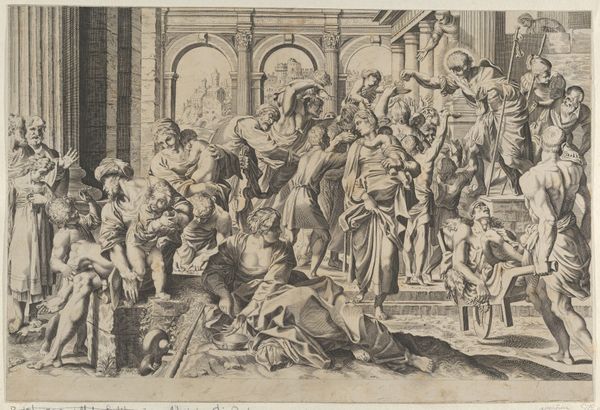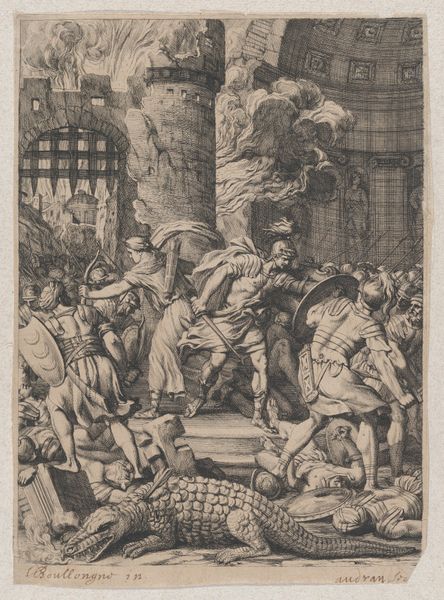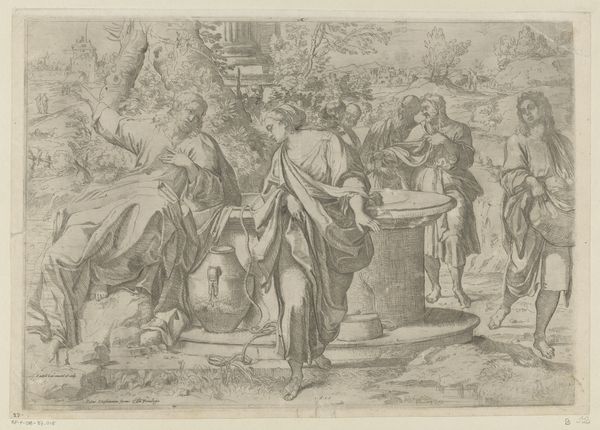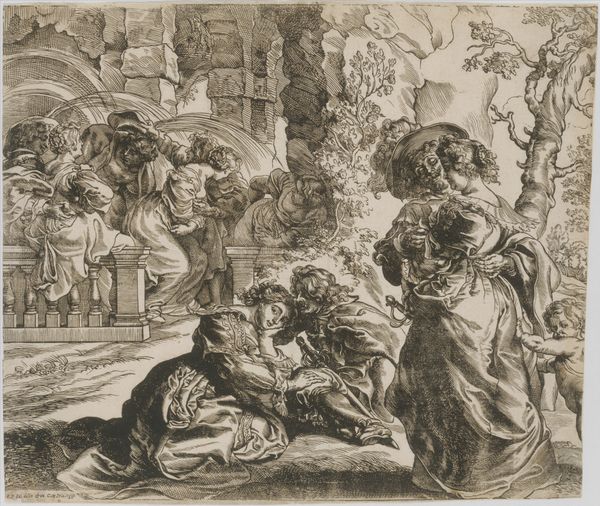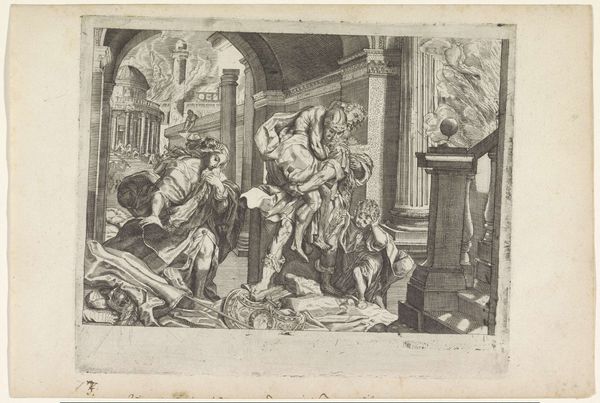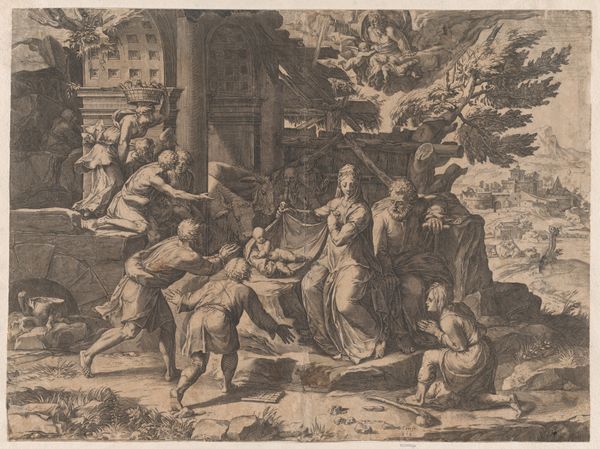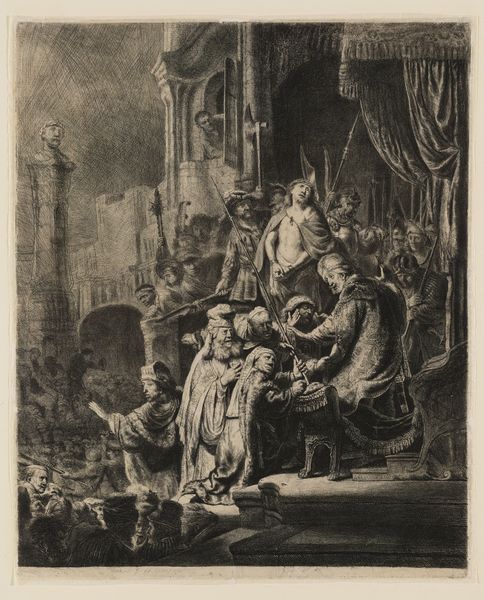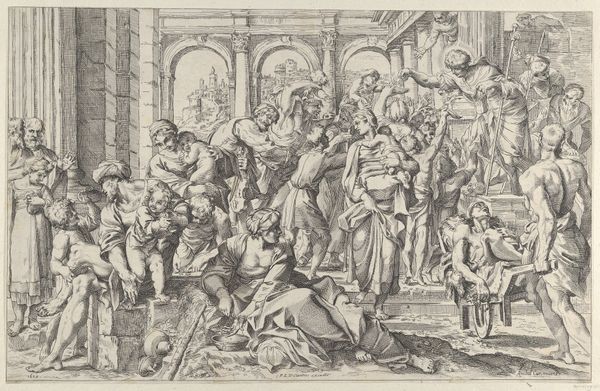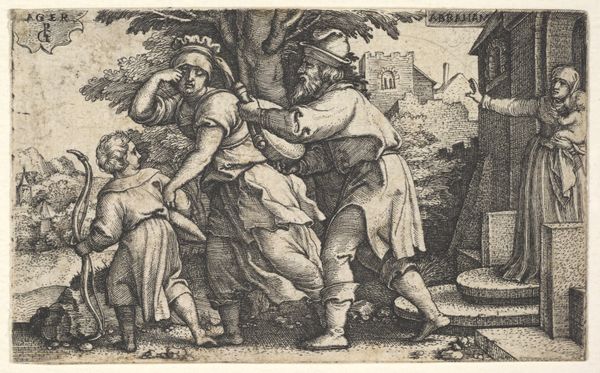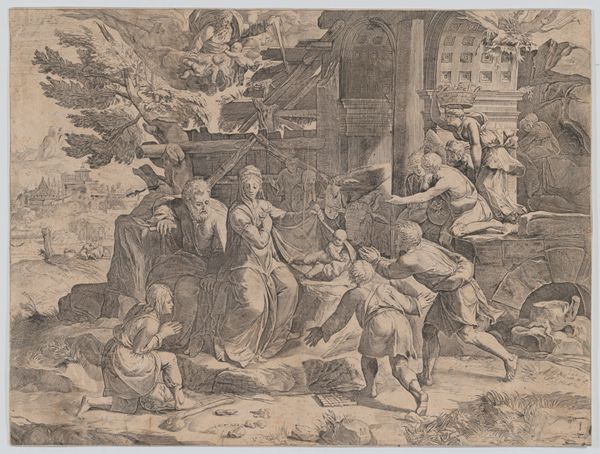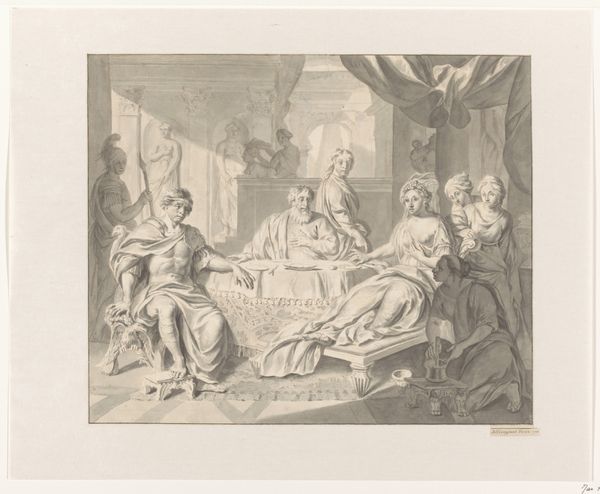
drawing, print, ink, engraving
#
drawing
#
ink drawing
#
allegory
# print
#
war
#
landscape
#
figuration
#
romanesque
#
ink
#
child
#
men
#
genre-painting
#
history-painting
#
italian-renaissance
#
engraving
Dimensions: Sheet (Trimmed): 15 1/4 × 20 7/8 in. (38.7 × 53 cm)
Copyright: Public Domain
Editor: So, this is "Aeneas and his family fleeing Troy," a 1595 engraving by Agostino Carracci, currently at the Met. It feels so…staged, theatrical even. Like a heroic tableau, but amid all this implied chaos of a burning city. What stands out to you in this print? Curator: Beyond the dramatic poses, notice how Carracci uses the symbols of ruin, of the devastation of Troy, as a stage upon which Aeneas carries not just his son, but his heritage. Observe the figures—Aeneas embodies strength and duty, carrying his father Anchises, burdened by age and the weight of tradition. Ask yourself, what does this act of carrying signify about the continuity of culture, even amidst destruction? Editor: It's almost like he's physically carrying the past into the future. The burning city in the background underscores that loss, but his action…is it meant to offer hope? Curator: Precisely. The burning Troy isn't just backdrop; it's a potent symbol of a world collapsing, of endings. But consider what Aeneas embodies: piety, familial duty, and the promise of a new beginning in Italy, a foundational myth for Rome itself. The trauma of displacement becomes inextricably linked with destiny, with founding a new world from the ashes of the old. Where else can you see this theme represented? Editor: You're right. Now I see the little details as part of a bigger picture. It is an image deeply entrenched with loss and new beginnings. Curator: Images like this echo through time. Exploring such powerful and emotional engravings is such a moving experience. Editor: I'll definitely keep an eye out for these connections in other artworks. Thank you.
Comments
No comments
Be the first to comment and join the conversation on the ultimate creative platform.

